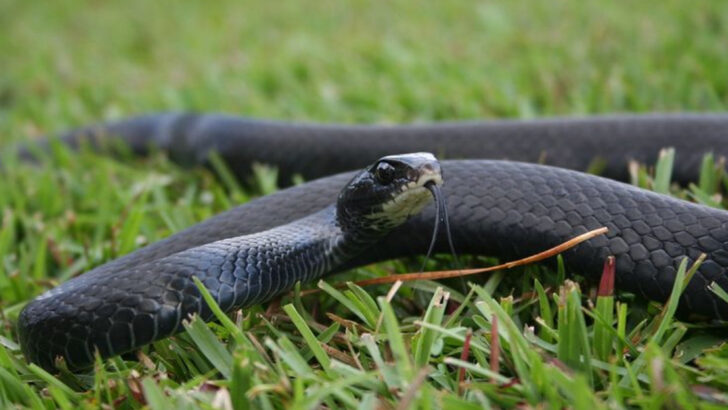Not every black snake is out to get you—but tell that to your panic reflex. One slithers across the trail and your heart skips five beats. Is it venomous? Is it harmless? Should you run? The color black doesn’t give you many clues—but the details might save you a scream (or worse). Some of these sleek reptiles pack a serious punch. Others are misunderstood bug-eaters who just want to be left alone. The problem? They often look exactly the same. Before you grab a shovel—or sprint in the opposite direction— take a moment to meet the snakes hiding in plain sight. Learn who’s a backyard helper… and who’s better admired from far away.
Black Mamba

The Black Mamba, with its sleek body and swift movements, is both feared and misunderstood. Native to sub-Saharan Africa, this snake thrives in open landscapes. Known for its potent venom, it can deliver rapid strikes if threatened.
Interestingly, the Black Mamba is named for the black coloration inside its mouth, rather than its external appearance. Despite its fearsome reputation, it usually avoids human contact. This species plays a vital role in controlling local rodent populations.
The Black Mamba’s speed and agility are unmatched, making it an apex predator in its ecosystem. Caution is advised if encountered.
Eastern Indigo Snake

The Eastern Indigo Snake is a non-venomous marvel of the southeastern United States. With its glossy, blue-black scales, this snake is more than just a pretty face. It inhabits pine forests and wetlands, playing a crucial role in maintaining ecological balance.
This snake is known for its docile nature, often avoiding confrontation. Unlike many others, it doesn’t have venom, making it harmless to humans. Its size can be intimidating, but its gentle disposition wins hearts.
The Eastern Indigo Snake often partners with gopher tortoises, sharing burrows in a unique biological symbiosis.
Cottonmouth
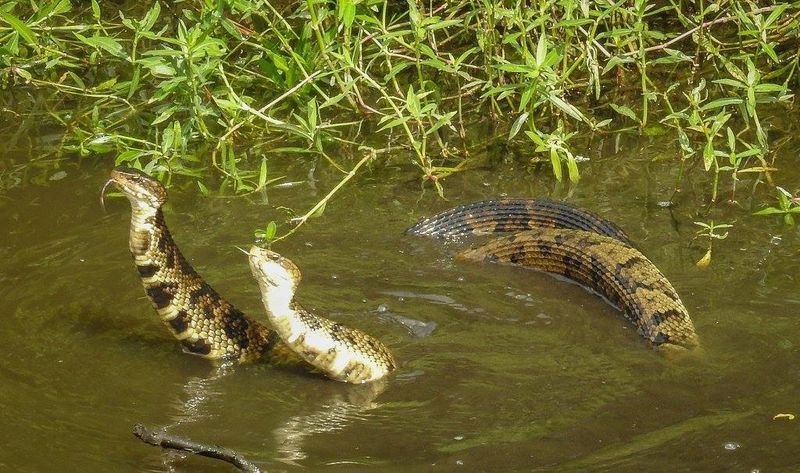
The Cottonmouth, known for its distinctive white mouth, is a semi-aquatic snake found in the southeastern USA. Often seen near water, it’s an expert swimmer and can be aggressive if threatened.
Its venom is potent, causing damage to tissues if untreated. The Cottonmouth’s thick body and triangular head are warning signs to those who stumble upon it. Although its bite is serious, fatalities are rare.
This snake’s role in controlling fish and amphibian populations is essential, despite its fearsome reputation. Awareness and respect ensure peaceful coexistence.
Black Rat Snake

The Black Rat Snake is a common sight in North America, known for its climbing prowess and calm nature. Its glossy black scales and white chin are iconic features.
Found in forests and fields, it’s often mistaken for the venomous cottonmouth, but poses no threat to humans. This constrictor prefers to flee rather than fight, making it a welcome visitor to gardens and farms.
Its diet primarily consists of rodents, helping to keep pest populations in check. The Black Rat Snake’s adaptability and gentle nature make it a fascinating creature to observe.
King Cobra

The King Cobra, revered and feared, is the longest venomous snake. Found primarily in India’s forests, this snake commands respect with its imposing size and hood display.
Its venom is powerful enough to take down an elephant, but it primarily targets other snakes. Despite its deadly capabilities, it is typically shy and avoids human encounters unless provoked.
The King Cobra’s presence in the ecosystem is critical for controlling snake populations. Its regal appearance and behavior have made it a subject of fascination and reverence worldwide.
Northern Black Racer
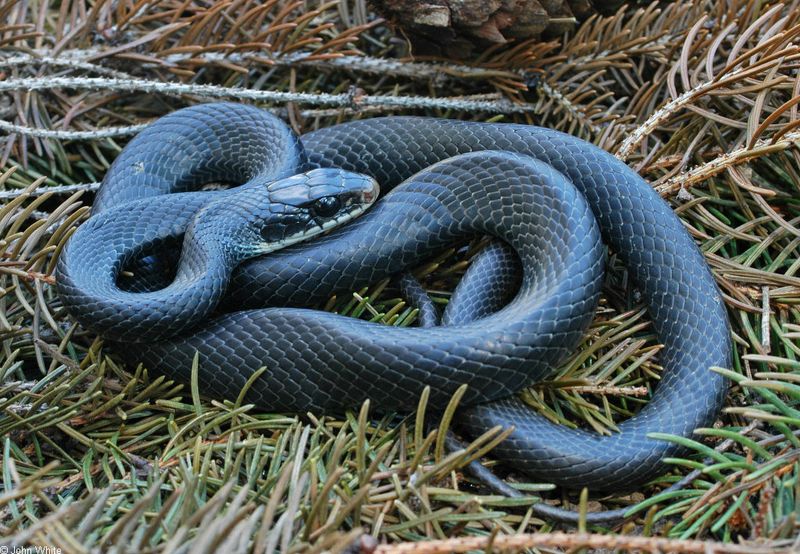
The Northern Black Racer is a swift, agile snake found in open fields and meadows across the eastern United States. Its smooth black scales and slender body are designed for speed.
Though it can be aggressive when cornered, it’s non-venomous and poses no real threat to humans. This snake prefers flight over fight, making it difficult to capture or study closely.
Its diet includes insects and small vertebrates, playing a critical role in the food chain. The Northern Black Racer’s energy and speed are a testament to its survival skills.
Boomslang
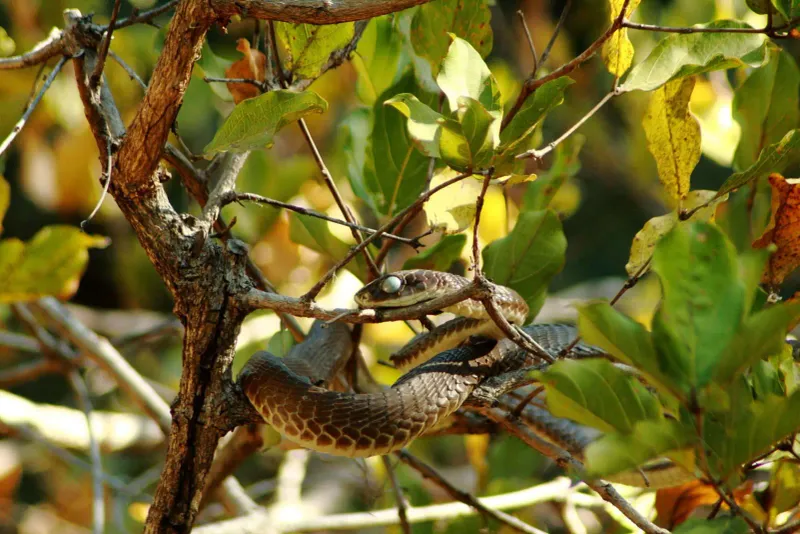
The Boomslang is a highly venomous snake native to sub-Saharan Africa. Its name means “tree snake” in Afrikaans, reflecting its arboreal lifestyle.
Despite its beautiful green and black hue, the Boomslang’s venom can cause serious bleeding disorders. However, it is generally shy and avoids confrontation, often retreating deep into trees.
Its large eyes provide excellent vision, aiding in hunting birds and eggs. The Boomslang’s elusive nature and potent venom make it both a captivating and intimidating presence in its natural habitat.
Black Racer

The Black Racer is known for its speed and curiosity. Found across North America, this slender, black snake is often seen darting through forests.
Non-venomous and generally harmless, it feeds on small rodents and insects, offering natural pest control. Though it may exhibit defensive behavior, it rarely poses a threat to humans.
This snake’s adaptability to various environments is impressive, making it a common sight in suburban areas as well. The Black Racer’s elegant movements and inquisitive nature are part of its charm.
Black-headed Python
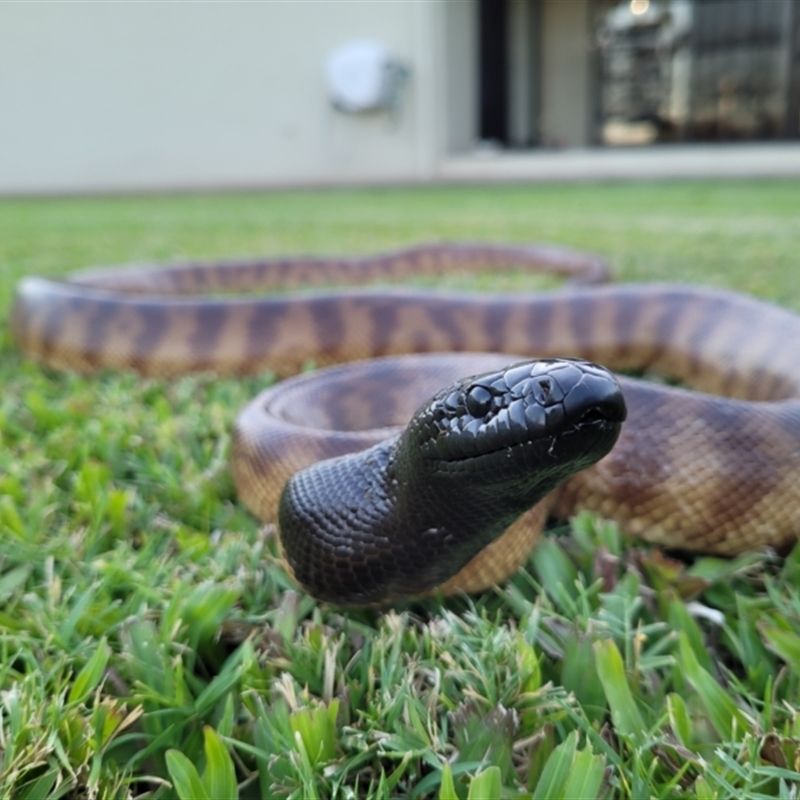
The Black-headed Python is an Australian native, easily recognized by its glossy black head and contrasting brown body. This non-venomous snake is a master of heat regulation, using its black head to absorb the sun’s warmth.
Residing in rocky terrains and woodlands, it preys on reptiles and small mammals. Its docile nature makes it a favored pet among snake enthusiasts.
This python’s striking appearance and gentle temperament add to its appeal. Its presence in the Australian ecosystem helps control local wildlife populations, showcasing nature’s balance.
Western Diamondback Rattlesnake
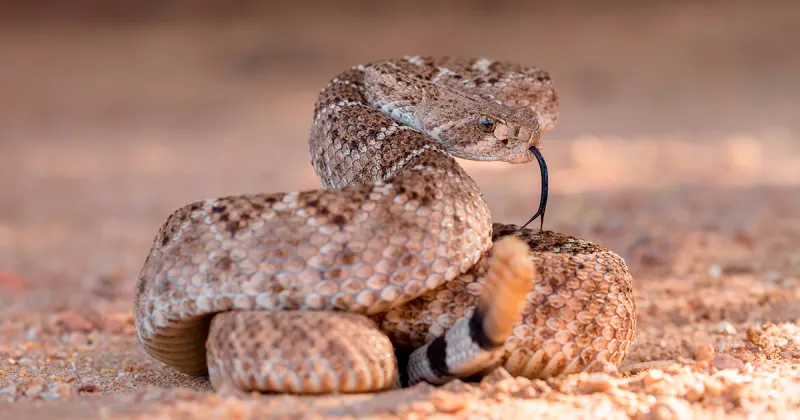
The Western Diamondback Rattlesnake is a symbol of the American Southwest, known for its distinctive rattle and patterned skin. It occupies arid regions, often sunning on rocks or hiding in burrows.
Venomous and defensive, it delivers a potent bite if threatened. However, its rattle serves as a warning, offering a chance to retreat. Its role in controlling rodent populations is crucial for the desert ecosystem.
The Western Diamondback’s reputation is built on both respect and caution. Its ability to warn and defend makes it a fascinating yet formidable creature.
Common Garter Snake
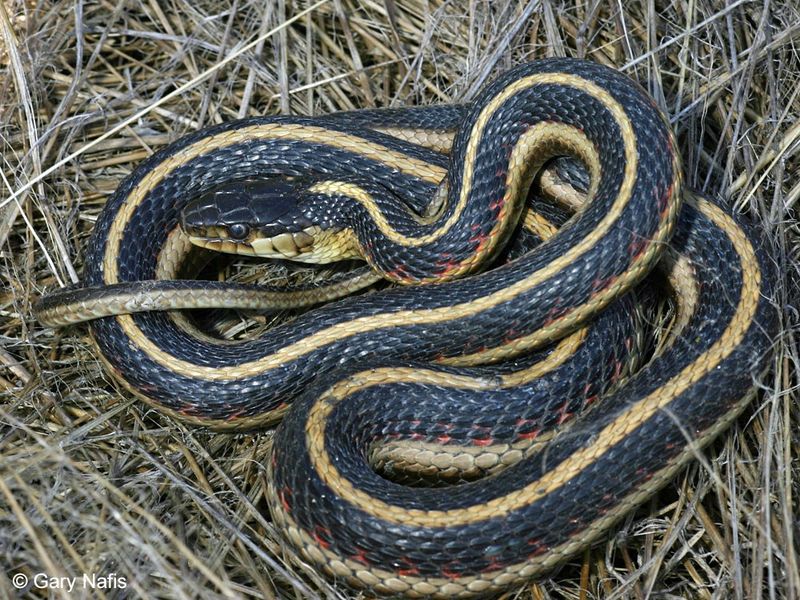
The Common Garter Snake is a familiar sight across North America, known for its distinctive stripes and gentle nature. Found in gardens and wetlands, it’s often admired for its adaptability.
Non-venomous and harmless, this snake preys on insects and amphibians, helping gardeners by controlling pests. Its bright coloration acts as a warning to predators, despite lacking real danger.
The Common Garter Snake’s presence is a sign of a healthy ecosystem. Its friendly demeanor and ecological role make it a beloved garden inhabitant.
Red-bellied Black Snake

The Red-bellied Black Snake is a striking Australian native with a glossy black back and vibrant red belly. Found near water, it’s both beautiful and potentially dangerous.
Venomous yet shy, it rarely poses a threat to humans unless provoked. Its bite can cause illness, but fatalities are rare. This snake’s preference for aquatic environments keeps it away from urban areas.
Its diet of frogs and fish aids in ecological balance. The Red-bellied Black Snake’s combination of beauty and cautionary nature makes it a unique Australian species.
Coachwhip
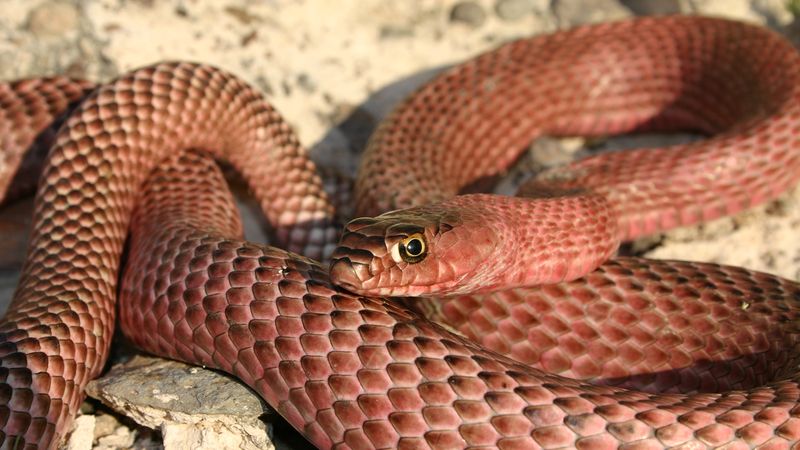
The Coachwhip, known for its speed and alertness, is a long, slender snake found in the southern United States. Its coloration varies, but its lengthy body is unmistakable.
Non-venomous and curious, the Coachwhip is known to investigate its surroundings, often raising its head to survey the area. It feeds on insects and small animals, playing a vital role in its ecosystem.
This snake’s inquisitive nature and ability to cover ground quickly make it an intriguing species. Its preference for dry, open areas adds to its unique character.
Yellow-bellied Sea Snake
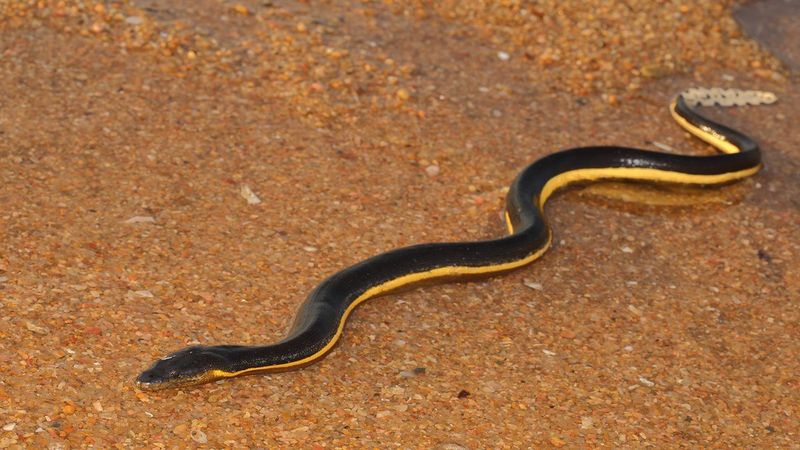
The Yellow-bellied Sea Snake, with its contrasting yellow and black body, navigates the world’s oceans. Venomous yet rarely dangerous to humans, it spends its life at sea, coming to shore only by accident.
Its paddle-like tail aids in swimming, allowing it to hunt fish with precision. Despite its oceanic life, encounters with humans are infrequent.
This snake’s adaptation to marine life is remarkable, showcasing nature’s ability to thrive in diverse environments. The Yellow-bellied Sea Snake’s beauty and mystery continue to captivate those who study it.
Black-banded Sea Krait
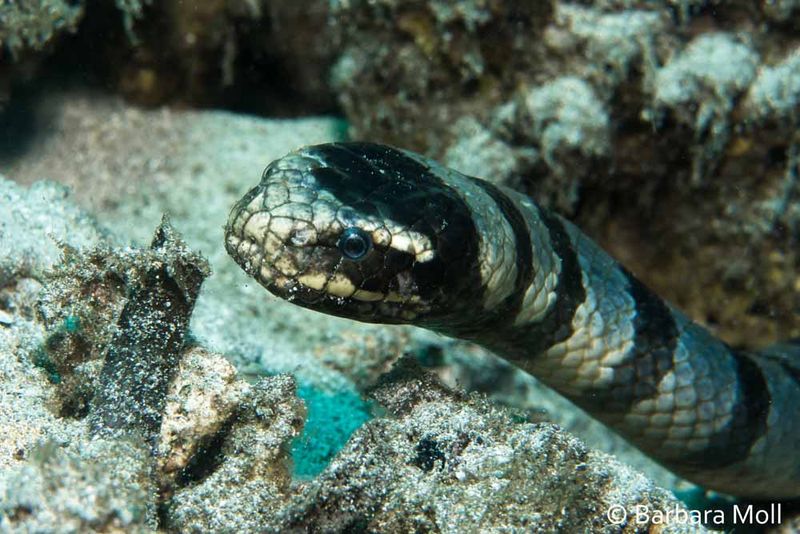
The Black-banded Sea Krait is a venomous marine snake found in the warm waters of the Pacific and Indian Oceans. Recognizable by its black and white bands, it spends time both on land and sea.
Its venom is potent, used to paralyze prey, but it is docile around humans. The snake’s lung capacity allows it to dive deep, hunting in coral reefs.
Despite its dangerous potential, the Black-banded Sea Krait is essential for controlling fish populations. Its striking appearance and dual habitat make it a subject of marine fascination.
False Water Cobra
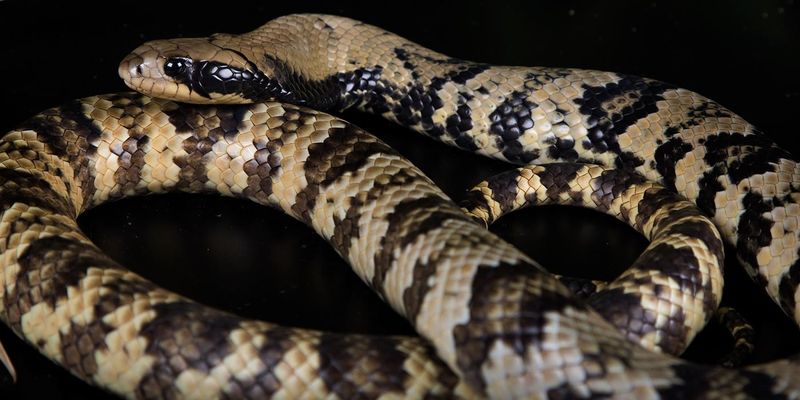
The False Water Cobra, native to South America, mimics the appearance of true cobras with its hood. Non-venomous and mostly harmless, it still manages to intimidate potential threats.
Living near water bodies, it preys on fish and amphibians, showcasing a unique hunting style. Its ability to flatten its neck is a defense mechanism rather than a sign of aggression.
This snake’s mimicry and adaptability make it a fascinating study in evolutionary biology. Its striking appearance and behavioral traits add to its allure.
Philippine Cobra
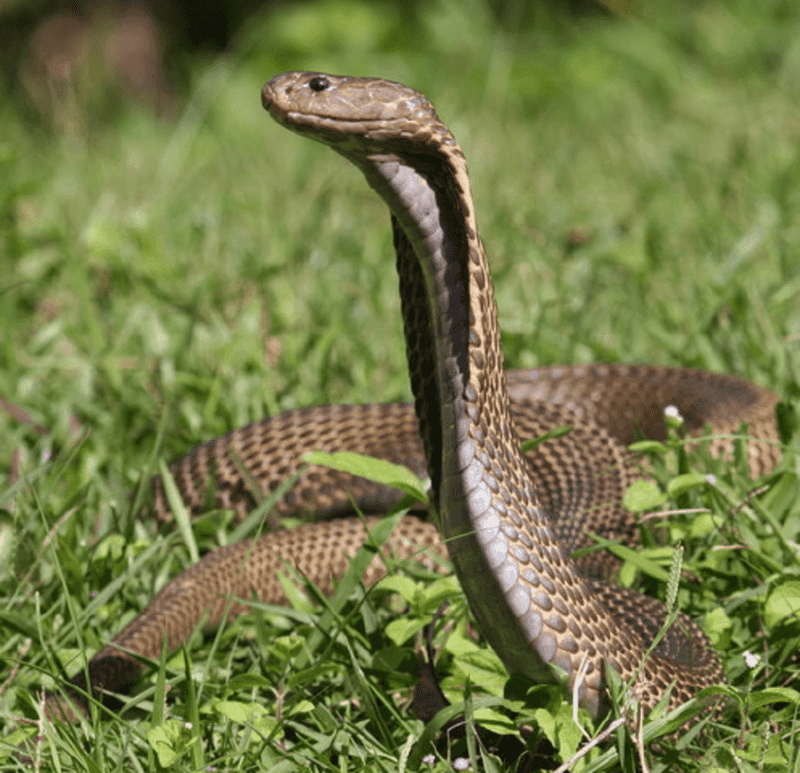
The Philippine Cobra, with its iconic hood, is a highly venomous snake native to the Philippines. Known for its ability to spit venom, it’s both feared and respected.
Despite its deadly potential, it prefers to flee rather than confront. Its habitat includes forests and agricultural fields, where it controls pest populations.
The Philippine Cobra’s role in its ecosystem is balanced by its dangerous reputation. Its elegant form and potent venom make it a compelling yet cautionary tale.
Eastern Brown Snake
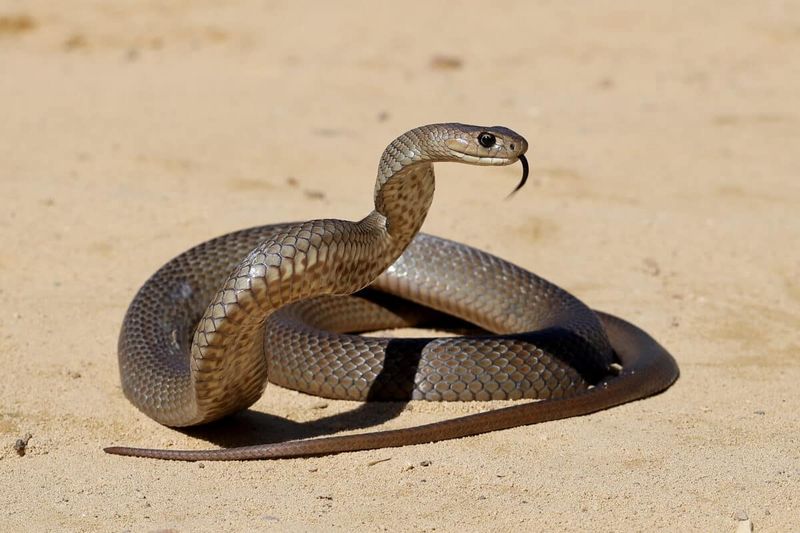
The Eastern Brown Snake, found in Australia, is both swift and deadly. Its venom is one of the most potent, capable of causing rapid envenomation.
Despite its aggressive reputation, it primarily avoids human interaction. This snake’s presence in rural and suburban areas underscores the need for awareness and caution.
The Eastern Brown Snake’s efficiency as a predator keeps rodent populations in check. Its adaptability and lethal bite make it a snake to admire from a distance, recognizing its ecological importance.

